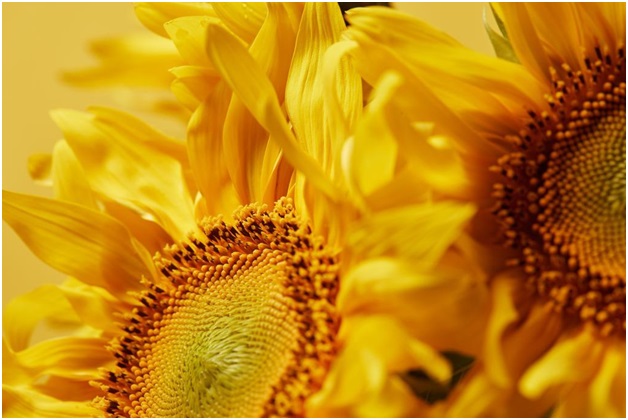Introduction
The sunflower, with its radiant yellow petals and captivating round centers, is a truly enchanting flower that has captivated humanity for centuries. This magnificent bloom is not only visually stunning but also possesses a rich history and a wide range of uses. In this article, we will delve into the fascinating world of sunflowers, exploring their origins, their unique characteristics, their diverse uses, and the tips for successfully growing and caring for these remarkable flowers.
History of Sunflowers
The history of sunflowers dates back thousands of years, with their origins traced to the ancient civilizations of the Incas and Aztecs. In these societies, sunflowers held great symbolic significance, representing concepts such as fertility, life, and longevity. If you’re looking for more information about the allure beauty of sunflowers click this link, https://wellliveflorist.com/collections/sunflower. Sunflowers were valued for their nutritional value, as their seeds were harvested and consumed as a source of food.
The sunflower is native to North America, where it was first discovered by Spanish explorers in the 1500s. They brought this captivating flower back to Europe, where it quickly gained popularity. Sunflowers began to be cultivated extensively throughout the continent, and many countries even adopted the sunflower as an official emblem or national symbol.
In modern times, sunflowers have become a beloved flower worldwide due to their association with happiness and cheerfulness. They are not only appreciated for their beauty but also find their place in traditional medicine practices, believed to possess healing properties that can help combat depression and anxiety disorders.
Characteristics of Sunflowers
Sunflowers possess a range of unique characteristics that make them truly special. One of the most striking features of sunflowers is their impressive size. Some varieties can grow as tall as 12 feet, thanks to their ability to track the movement of the sun throughout the day. This phenomenon, known as heliotropism, allows the sunflower to maximize its exposure to sunlight and grow taller than other plants in its environment.
Another captivating characteristic of sunflowers is their diverse array of colors. From vibrant yellows and oranges to deep reds and purples, sunflowers offer a kaleidoscope of hues. These beautiful blooms not only attract pollinators like bees but also serve an important purpose by protecting other flowers from frost damage. Sunflowers radiate heat, which can raise temperatures by several degrees and safeguard neighboring flowers in colder climates.

Sunflower Uses
Sunflowers are more than just a pretty sight in gardens; they have a multitude of uses that extend beyond their ornamental value. When it comes to garden aesthetics, sunflowers are a perfect addition, adding bursts of vibrant color with their bright petals. They are relatively easy to grow, requiring full sun and well-drained soil, making them a popular choice for garden enthusiasts. Whether planted in large groups or as individual specimens, sunflowers create striking beauty wherever they are found.
But the uses of sunflowers do not stop there. Sunflower seeds are a treasure trove of nutrition, rich in protein, healthy fats such as omega-3 fatty acids, and essential vitamins and minerals. These versatile seeds can be enjoyed in various ways, from raw or roasted snacks to being ground into flour for baking or pressed into oil for cooking. Sunflower seeds can even be brewed into tea or transformed into delightful pesto sauce.
In certain cultures where traditional medicine practices persist, sunflowers have been revered for their therapeutic properties. They are believed to possess healing abilities and are used to alleviate ailments such as depression and anxiety. The sunflower’s association with happiness and positive energy has made it a symbol of hope and a source of comfort for many.
Growing and Care Tips for Sunflowers
While sunflowers are undoubtedly beautiful, they require proper care to thrive. To ensure successful growth, it is important to choose an area that receives ample direct sunlight and has well-drained soil enriched with organic matter. Planting sunflower seeds at a depth of around 1 inch and spacing them at least 6 inches apart allows for optimal growth. Regular watering is essential to keep the soil moist but not waterlogged. As the plants grow taller, applying a layer of mulch around them helps retain moisture and prevents weed growth.
During their growth cycle, sunflowers require regular watering to stay healthy and produce beautiful blooms. Adequate hydration, particularly during dry periods or hot summer days, is crucial to support their growth and development. Additionally, providing support such as stakes or trellises can help maintain the stability of tall sunflower stems, preventing them from bending or breaking under the weight of their large flower heads.
Conclusion
In conclusion, the sunflower is a truly remarkable flower that offers much more than just visual appeal. Its vibrant petals and striking appearance have made it a beloved choice for gardens and homes worldwide. Beyond its ornamental value, sunflowers provide a range of benefits, from their nutritional seeds to their medicinal properties. Growing and caring for sunflowers requires attention to sunlight, soil, and watering needs. By embracing the beauty and versatility of sunflowers, we can add a touch of radiance and diversity to our landscapes. So, let the sunflower’s brilliance bloom in your garden and bring joy to your surroundings.




